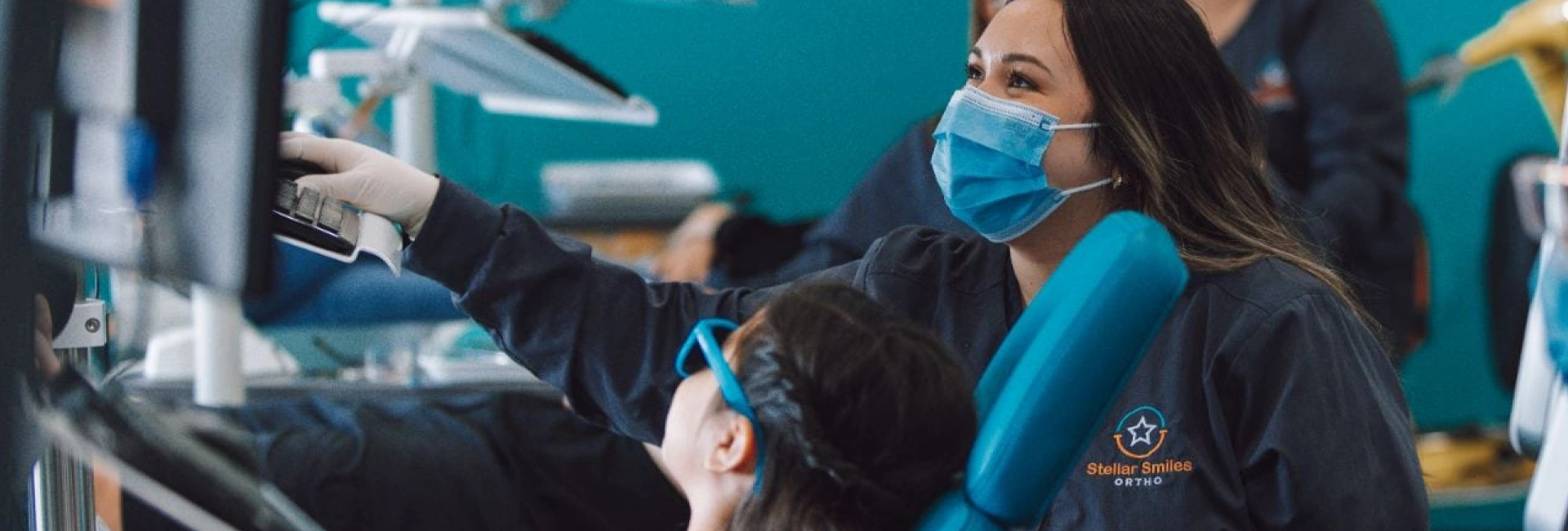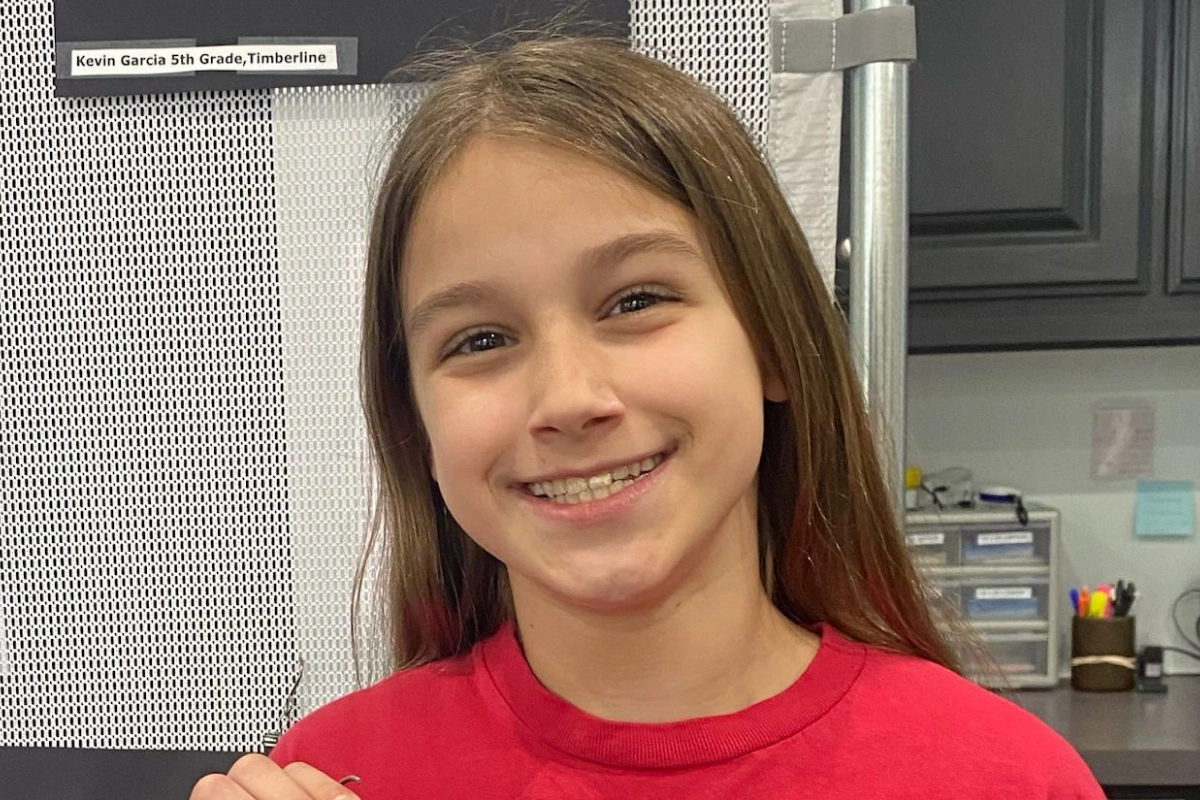
He desire for a perfect smile isn’t reserved for teenagers. Many adults are now choosing to undergo orthodontic treatment to achieve straighter teeth and a more confident smile. But with busy lives and a focus on faster results, adults often wonder: What types of braces work the fastest?
This comprehensive guide explores the different types of braces available for adults, dives into the factors that affect treatment timelines, and highlights the options that can deliver a straighter smile in the shortest amount of time.
Understanding Adult Braces
There are several types of braces available for adults, each with its own unique set of advantages and disadvantages. Here’s a breakdown of the most common options:
- Traditional Metal Braces: The tried-and-true method, metal braces use brackets bonded to each tooth and connected by a metal wire. Adjustments are made regularly to gradually move teeth into their desired positions.
- Self-Ligating Braces: Similar to traditional braces but with a more advanced design. Self-ligating braces use a special clip mechanism to hold the wire in place, reducing friction and potentially leading to faster treatment times.
- Clear Aligners (e.g., Invisalign): A popular choice for adults seeking a more discreet option. Clear aligners are a series of custom-made, removable trays that gradually shift teeth into place.
- Lingual Braces: Placed on the backside of the teeth, lingual braces offer the ultimate in concealment. However, they can be more expensive and may cause slight speech impediments during adjustment periods.
- Ceramic Braces: Similar to metal braces but use tooth-colored brackets for a less noticeable appearance. While they offer improved aesthetics, ceramic brackets can be more fragile and may extend treatment times slightly.
It’s important to remember that treatment time isn’t solely dependent on the type of braces. Several other factors can influence how quickly you achieve your desired results.
Factors Affecting Treatment Time
Even with the fastest braces, achieving a straighter smile takes time and dedication. Here are some key factors that can influence your individual treatment timeline:
- Age: Younger patients tend to have more flexible bones and tissues, allowing for faster tooth movement compared to adults with more mature bone structures.
- Severity of Misalignment: The degree of misalignment plays a significant role. Minor crowding or spacing issues can be corrected more quickly than severe bite problems or rotations.
- Bone Density: Denser bone can make tooth movement slower. An orthodontist in Grapevine will assess your bone density during the consultation to determine if additional procedures might be necessary.
- Compliance with Treatment Plan: Following your Grapevine orthodontist’s instructions regarding appointment schedules, wearing braces or aligners as directed, and maintaining good oral hygiene are crucial for staying on track and minimizing treatment time.
Understanding these factors will help you and your nearest Grapevine orthodontist develop a realistic treatment plan that achieves your desired results within a timeframe that aligns with your expectations.
Fastest Braces for Adults: A Detailed Look
While every case is unique, some types of braces tend to offer faster results for adults compared to others. Here’s a closer look at two options that can potentially expedite your journey to a straighter smile:
- Clear Aligners (e.g., Invisalign):
Treatment Process: Clear aligners involve wearing a series of transparent, removable trays that gently shift teeth into their desired positions. Patients typically receive new aligner trays every 1-2 weeks, gradually progressing towards their final smile.
Advantages: Clear aligners offer several benefits that contribute to potentially faster treatment times for minor to moderate cases of misalignment. These include:
- Comfort: The smooth plastic trays are generally more comfortable to wear compared to traditional braces with brackets and wires.
- Removable: Aligners can be removed for eating, brushing, and flossing, promoting better oral hygiene which can contribute to faster tooth movement.
- Compliance: The ease of removal can encourage better compliance with the treatment plan, leading to potentially faster results.
Disadvantages: It’s important to consider some limitations of clear aligners:
- Suitability: Clear aligners may not be suitable for all cases, particularly those involving severe misalignment or complex bite problems.
- Discipline Required: Successful treatment relies heavily on consistent wear time. Patients who don’t wear the aligners for the prescribed amount of time may experience extended treatment durations.
- Cost: Clear aligners can be a more expensive option compared to traditional braces.
- Self-Ligating Braces:
How They Work: Self-ligating braces function similarly to traditional braces but utilize a special clip mechanism to hold the archwire in place. This reduces friction between the wire and the brackets, potentially leading to faster tooth movement.
Benefits: Self-ligating braces offer several advantages that can contribute to potentially shorter treatment times:
- Reduced Friction: Less friction between the wire and brackets allows for smoother tooth movement.
- Fewer Adjustments: Self-ligating braces may require fewer adjustments compared to traditional braces, potentially streamlining the treatment process.
- Comfort: The reduced friction can also translate into a more comfortable orthodontic experience for patients.
Considerations: While self-ligating braces offer potential benefits, some factors to keep in mind include:
- Appearance: Self-ligating braces still use metal brackets and wires, so they may not be as aesthetically pleasing as clear aligners.
- Cost: Self-ligating braces may be slightly more expensive than traditional braces.
Alternative Braces for Faster Treatment
While clear aligners and self-ligating braces offer promising results for faster adult orthodontics, there’s another approach that can potentially accelerate treatment time regardless of the chosen brace type:
Accelerated Orthodontics with Temporary Anchorage Devices (TADs):
- Process Explanation: This technique utilizes tiny screws or implants (TADs) temporarily placed in the jawbone. These TADs act as additional anchorage points for the braces, allowing for more controlled and potentially faster tooth movement compared to traditional methods relying solely on the teeth themselves.
- Suitability: Accelerated orthodontics with TADs can be a suitable option for adults with moderate to severe misalignment cases, where faster correction is desired.
- Potential Side Effects: As with any dental procedure, there are potential side effects to consider. These can include mild discomfort during TAD placement and removal and the possibility of minor gum irritation around the TADs. It’s crucial to discuss these potential side effects with your orthodontist in Grapevine to determine if this approach aligns with your comfort level.
Choosing the right option depends on your individual needs, preferences, and case complexity. Consulting with your nearest Grapevine orthodontist is essential to determine the best course of action for achieving your fastest smile transformation.
Choosing the Fastest Braces for You
Now that you have a better understanding of the different types of braces and factors affecting treatment time, it’s time to delve into choosing the right option for your adult smile journey. Here are some key steps:
- Consultation with an Orthodontist: This is the most crucial step. A top-notch orthodontist will assess your individual needs, perform a comprehensive examination, and discuss your desired outcomes. Based on this evaluation, they can recommend the most suitable type of braces for achieving your fastest smile transformation while considering factors like:
- Severity of misalignment
- Bone density
- Overall oral health
- Lifestyle and preferences (e.g., desire for discretion)
- Considering Your Lifestyle and Preferences: Adults often prioritize aesthetics and convenience alongside faster treatment times. Discuss your lifestyle and preferences with your orthodontist. Do you value clear aligners for their removability during meals and social events? Or is the potential for slightly faster treatment with self-ligating braces more appealing?
- Cost Comparisons of Different Braces: While cost shouldn’t be the sole deciding factor, understanding the investment involved is essential. Discuss the costs associated with different types of braces, including potential additional fees for accelerated orthodontics with TADs. Evaluating these costs alongside your treatment timeline and desired outcome will help you make an informed decision.
Remember, there’s no single “fastest” option that works for everyone. The ideal choice depends on your unique circumstances and goals. By working collaboratively with your Grapevine orthodontist, you can determine the braces that will deliver a straighter smile in the most efficient and comfortable way possible.
Frequently Asked Questions
How painful are braces?
Most patients experience some initial discomfort during the adjustment period, but this usually subsides within a few days. Over-the-counter pain relievers can help manage any discomfort.
Can I eat normally with braces?
Traditional braces require some dietary adjustments to avoid damaging the brackets and wires. However, clear aligners can be removed for eating, allowing you to enjoy your regular diet.
How long will I need to wear braces?
Treatment time varies depending on the type of braces, severity of misalignment, and individual factors. Generally, adult treatment with braces can range from 6 months to 2 years.



